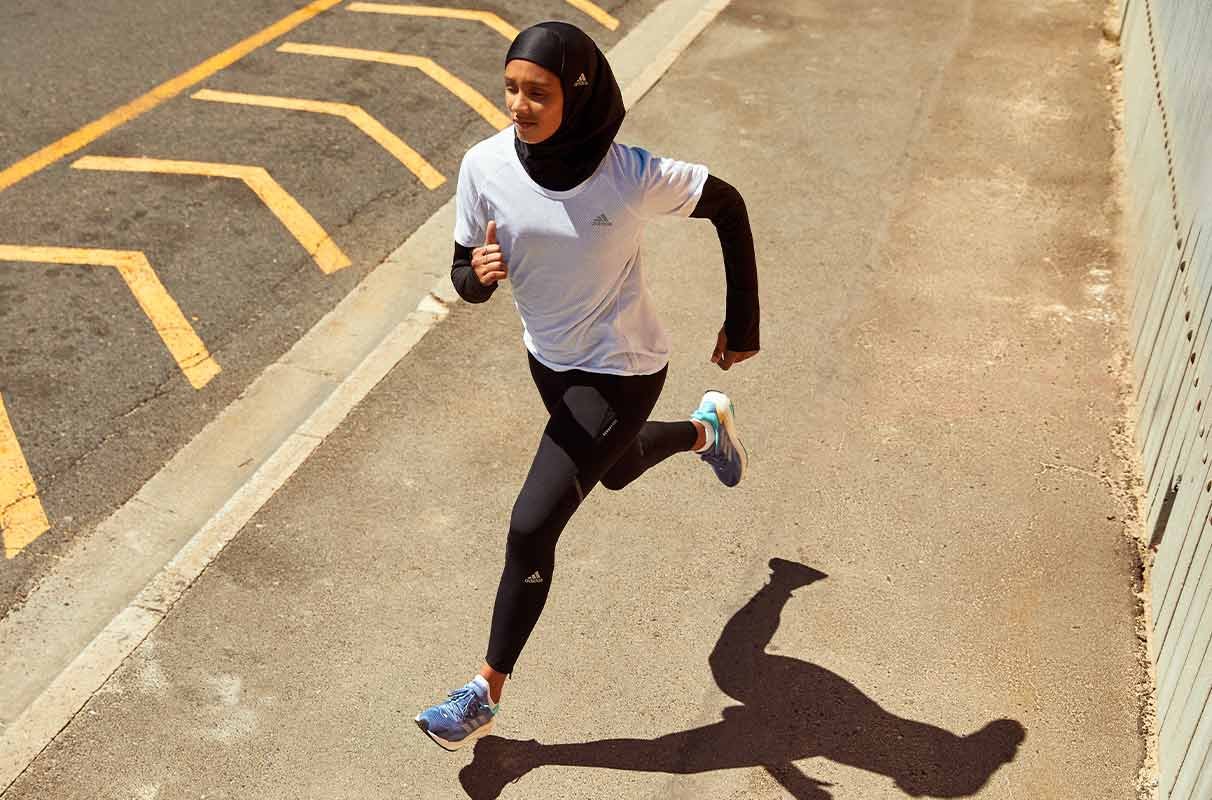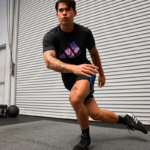
Tired of your skin feeling like it’s being slowly sanded down as you exercise? Chafing is a skin irritation caused by friction. Inner thigh chafing is often caused by thighs rubbing together while walking or running. Chafed nipples, often referred to as “jogger’s nipple,” occur from nipples rubbing against clothing.
Preventing chafing is simple. This guide will show you how to prevent inner thigh chafing, jogger’s nipple, groin chafing, buttocks chafing and armpit chafing. You will also learn how to heal chafed skin.
Suffering from cramps too? Learn how to stop muscle spasms and cramps.
Keep reading to stay chafe safe!
Inner Thigh Chafing
Inner thigh chafing happens to most people when they exercise. Someone with bigger thighs will struggle more with inner thigh chafing than someone with smaller thighs. Note that inner thigh chafing is not limited to people who struggle with their weight. People with very muscular thighs can also encounter inner thigh chafing.
Like all chafing, moisture from sweat and friction causes inner thigh chafing. The inner thighs work hard during most cardio exercises, which means they also tend to sweat a lot. Walking and running can cause inner thighs to rub together.
Moreover, inner thigh skin is thin. The skin’s thinness makes it more vulnerable to micro-tears caused by friction. Sweat and bacteria enter into the open skin and make chafing worse. This leads to the red rash that commonly occurs from inner thigh chafing.

How to Treat Inner Thigh Chafing
Choose clothes with a next-to-skin fit. For example, a good pair of running shorts or tights can protect your thighs when they rub together. Ensure a tight fit so that the clothing material itself doesn’t cause inner thigh chafing. Consider compression-type garments. Don’t wear cotton when exercising.
Apply chafing cream to inner thighs. Many people use petroleum jelly, but it can stain clothing. Purchasing a sport-specific chafing cream is a much better solution so that your gear will look great and last a long time.
Jogger’s Nipple / Chafed Nipples
Jogger’s nipple, runner’s nipple or just chafed nipples—whatever you call them—hurt and happen to most people. Loose-fitting shirts with graphics or sports bras are the most common culprits. Shirts and bras can chafe nipples when working out, sanding through layers of sensitive skin. This happens most often in running but can happen even when walking or doing other exercises.
Chafed nipples are more likely to occur when it is cold because nipples are more erect, making them more prone to chafe against shirts or bras. Jogger’s nipple is also likely to happen when it is hot or humid since running tops become soaked in sweat.


How to Treat Jogger’s Nipple / Chafed Nipples
Get the proper clothing. A correctly fitting sports bra will wick away moisture, prevent unnecessary friction, and create a physical barrier against a shirt. Pick a top without printed graphics on the front that won’t move too much (like a compression top). Use tops specially designed for your activity. Don’t ever wear cotton when you know you’ll be sweating a lot.
Use nipple barriers. Nipple barriers work because your top will rub against the barrier and not on your nipple. These could be medical bandages or special products designed with athletes in mind. Athletic nipple chafe prevention adhesives have the advantage that they will stay attached even when you sweat a lot.
Use chafing cream. Chafing cream lubricates your nipples so that any fabric that rubs against them will glide over the lubrication instead of slowly sanding down your nipples.
Until the chafing cream is rubbed away, that is…
This is why you see places where people can top up on chafing cream during running events like marathons. The race is simply too long for chafing cream to last, so people reapply multiple times throughout the race. You can do this on your training runs or rides! Bring small amounts of chafing cream with you in your pocket or hydration pack.
Check out this running equipment checklist and never forget an essential item again!
Groin Chafing
Groin chafing frequently happens because the skin in this area is very sensitive and thin. It can be very moist when working out. There are also lots of skin folds in this area, which means there are more places for skin to rub against itself or underwear. Clothes also come together in the groin region, which makes chafing even more likely!
Many people encounter groin chafing. It is uncomfortable, maybe even embarrassing, but don’t worry! It happens because you’re an athlete!
How to Avoid Groin Chafing
Don’t shave your groin area. This may sound counterintuitive, but pubic hair creates a barrier for clothing to brush against instead of rubbing directly against your skin.
Shaving this area exposes your skin to folliculitis (infected hair follicles). This happens because you essentially open up your skin when you shave. When you are active and sweat in this area, bacteria go directly into your skin, causing uncomfortable groin chafing and bacterial infection.
Choose non-cotton underwear. Performance-oriented synthetic fabrics are safe choices for exercise bottoms because they will wick sweat away from your skin. Some running shorts also come with running short liners, which are highly breathable and prevent sweat buildup. Make sure the fit of your underwear doesn’t cause inner thigh chafing or chafing where your legs meet your pubic area.
Use chafing cream. Apply chafing cream where your legs come together and on the insides of your thighs. Apply chafing cream to your pubic area if you experience chafing there. Chafing cream is key for this area because sport-specific chafing creams also contain bacteria-fighting ingredients. This will help prevent bacterial infections in your groin region.
Wondering what to drink after a sweaty workout? Try these sports drink alternative recipes.

Chafing Buttocks
Chafing in your buttocks (butt chafing) is very common and nothing to feel bad about. Chafing in this area usually occurs between your butt cheeks and lower down near your anus. This is a very moist area that encounters a lot of friction and has several areas where skin comes together. In other words, it has all the ingredients for a bad case of buttocks chafing (also known as “monkey butt”).
How to Stop Buttocks Chafing
Wear good bottoms. Underwear or running shorts that are too tight will not allow the buttocks area to breathe while you exercise. Additionally, underwear that is too small can ride between your butt (giving you a wedgie) and cause butt chafing that way. Underwear that is too large can bunch up and also go in between your butt cheeks.
Apply chafing cream. It may feel weird at first, but just give it a try. Apply chafing cream to the insides of your butt cheeks where they could rub together. It could save your butt!
Want to build a bigger butt? Try these booty builder workouts!
Armpit or Underarm Chafing
Armpit chafing happens because the skin is very thin and sensitive under your arms. The friction that causes chafing is due to swinging motions of your arms when running, walking, or pretty much any motion. Moreover, the area doesn’t breathe very well.
How to Avoid Armpit Chafing
Avoid shaving your armpits. Course hair that grows back acts like sandpaper against your skin. Similar to groin chafing, opening up the armpit skin by shaving increases the likelihood of bacteria entering through open skin and causing infection.
Wear sport-specific clothing when exercising. Wear a running top for running or a cycling top for cycling. The top will draw sweat away from your skin and allow air to pass through the garment onto your skin. This helps keep armpits drier.
Apply chafing cream. When all else fails, lubricate the area during exercise with sport-specific chafing cream.
How to Heal Chafed Skin
You followed all the tips to avoid chafed skin, but it happened anyway.
Heal chafed skin by following this easy 5-step process:
- Clean the area. Gently scrub the chafed skin with a soap designed for sensitive skin. This might hurt a little bit at first—be brave!
- Moisturize the area. Avoid products that clog skin pores.
- Let the skin breathe by wearing loose-fitting clothing. Be careful the loose clothing doesn’t cause more chafing though.
- Allow the skin to heal for a few days.
- Get the right gear so it doesn’t happen again!
Curious about another common exercise injury? Check out this guide to stop blisters in their tracks!



